Henry Ford
American Hero or Villian?
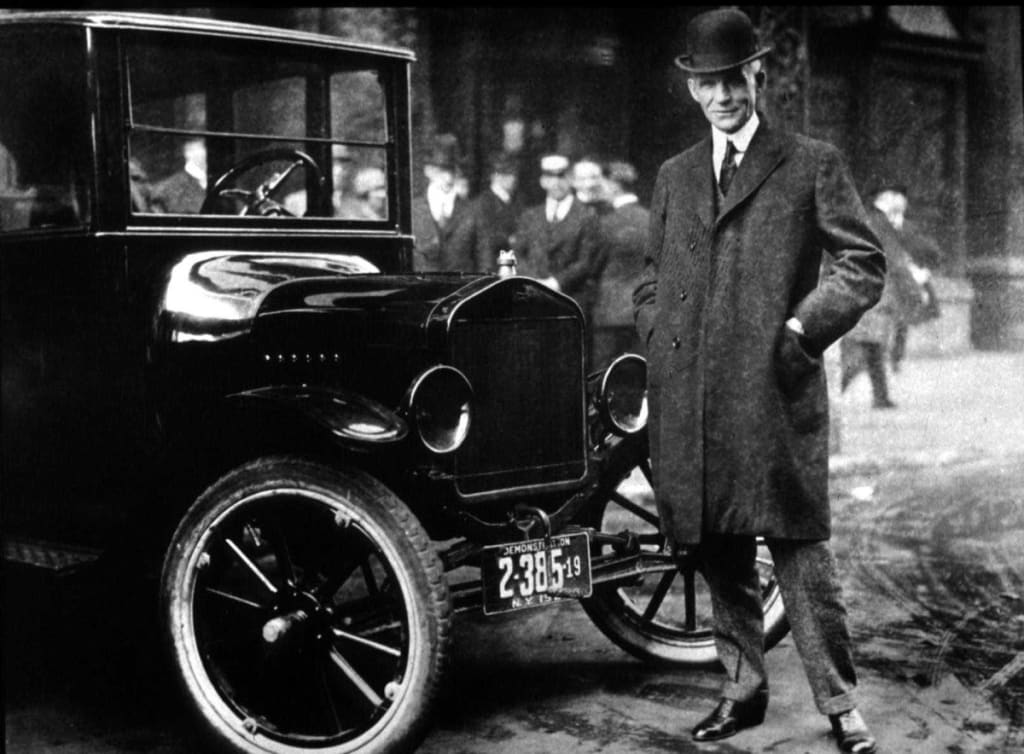
The age-old question- Ford or Chevy? It has broken relationships, started wars in families, Facebook pages have been created for supporters, men and women have stayed up all night waiting for the arrival of the latest and greatest vehicles to flow off production lines. It is an American icon, a way of life, a tribute to the hardworking citizens of this country, it is up there with Christmas and Apple pie.
What do you really know about Henry Ford, other than there are about a billion-car sale lots across the world with his name?
1. In 1893, at the age of 20, Ford was promoted to Chief Engineer of the Thomas Edison Illumination Company in Detroit. He worked there for only 6 years before Edison convinced him that he should follow his dreams and create a gasoline powered automobile.
2. Ford ran for a seat in the United States Senate after his friend President Woodrow Wilson convinced him to take up a life in politics. Ford lost by 4,500 votes, but oddly this is impressive because he didn’t spend a dime on the campaign.
3. Ford is actually the co-creator of Kingsford charcoal briquette. His brother in law E.G. Kingsford actually suggested creating a charcoal manufacturing plant when Ford complained about all the oak wood scraps that were pilling up on his production line from the parts that were needed for the Model T. Ford named the product Kingsford Charcoal in his honor, which is still the top producer of briquettes today.
4. In the movie Indiana Jones and the Temple of Doom, Indiana Jones is flying a Ford Tri-Motor airplane which was produced between 1928 and 1933 by the Ford Airplane Company.
Amazing facts right! Did you know that he created his first steam powered locomotive at the age of 15? What have I been doing with my life?
So, lets get past the History.com facts about Henry Ford and dive a little deeper.
Henry Ford was not the first inventor of the automobile. Now most of us will know that that honor belongs to Karl Benz from Germany in 1885/1886. But in reality, Leonardo Da Vinci in the 15th century was working on designs and models on ‘transport vehicles’. Credit is due though to Ford that he made cars that were affordable to the every-day American. Ford accredited his inspiration and forward thinking to a ‘Master Mind’ in an interview with the Detroit Times in 1928.
“Somewhere is a Master Mind sending brain wave messages to us. There is a Great Spirit. I never did anything by my own volition. I was pushed by invisible forces within and without me.”
But wait! There is more! While, most of us believe that Henry Ford was the creator of modern mass-production methods, that is not quite accurate. That honor actually belongs to the American inventor and automobile manufacturer of the 3 horse power, curved-dash Oldsmobile, Ransom Eli Olds. This was the initial vehicle to be commercially successful using the assembly system which foreshadowed contemporary mass-production systems. However, building on these techniques, Ford was able to produce 1 Model-T in 24 seconds. I can’t even get water to boil in 24 seconds, and he is making a damn car?
So, lets talk about the white elephant in the room, because honestly this is why you are still reading! Why would Ford be considered a villain by so many people? What could the iconic American done that would have people spitting at the mere mention of his name?
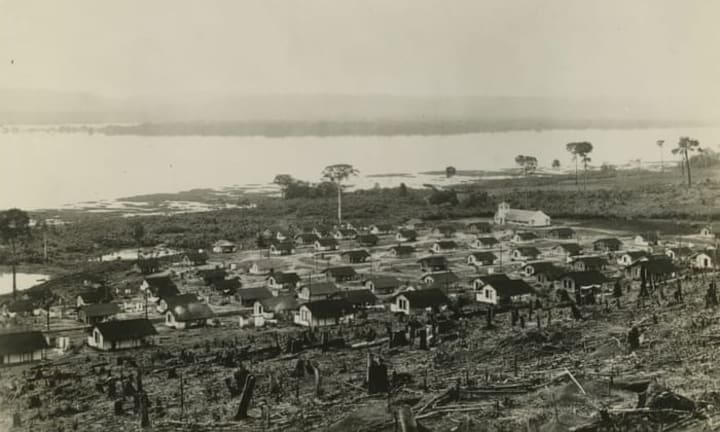
Welcome to Fordlandia. Imagine with me two and a half million acres of virgin rainforest in the heart of the Amazon forest. The amazing foliage, the 1,000-year-old trees, the songs of colorful birds, the hissing of dangerous animals, untouched by human hands and dreams. Not for long! Ford purchased this land for $125,000 and as soon as the check cleared, he began to transform it. It was to become a rubber plantation in Brazil, but more than that- he wanted to create a modern utopia modeled on small town America (Because there weren’t any small towns in American at that time? We needed to start again in anther country?). It was said that Ford considered himself to be a ‘prophet of proper living’. Now, when I say he built a town- I mean Ford built a town! There were on-site homes for the families, 8-hour shifts for the workers, a school, a golf-course, a hospital, a cemetery, a swimming pool, and a transportation system.
Sounds wonderful right?
Depends on who you ask. There is also a strict rule book that everyone had to follow, a meatless diet that was modeled after Ford’s vegetarian eating, alcohol was prohibited (so was prostitution), members of the community were forced to attend poetry reading and English-only signing sessions, only square dancing was allowed in the dance hall. There was a small break in the utopia when the dinning hall switched from wait service to a self-serve cafeteria. The locals were pissed! Not only are they eating gruel, but now they had a serve themselves. The inhumanity of it all! There was a riot where much of Fordlandia was destroyed, but it was soon quashed and only a simmer of rage lingered in the hearts of the Brazilin locals.

This is not the reason why Fordlandia failed, though it was a tipping point. No, it was because the Rubber tress is native to Brazil and Ford thought that these native trees could be grown like apple trees fields. He refused to hire an expert, and decided that he knew how to replant, regrow, and reproduce a tree that has never been seen in America. Well, he failed. Big Time! Even though Ford poured millions of dollars into this project, and even at one point moved the whole operation upstream, it could not sustain itself. The final blow came where synthetic rubber was created. So, what did Ford do? He sold the whole thing back to Brazil for $250,000 and just left. The buildings are still there, because Ford didn’t clean up his mess. They are all caved in and rusty. If you are brave you can stay at a local hotel and tour the ruins. But it bothers me that you have a multimillion-dollar franchise, and you couldn’t clean up your play room?
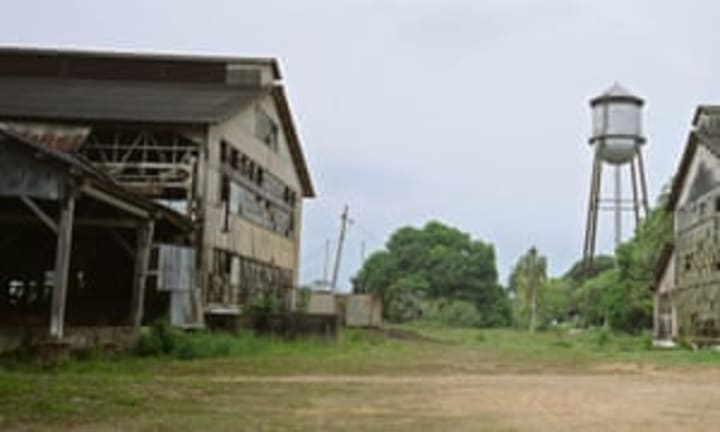
Maybe the one thing that really made me question the self-proclaimed humanitarian was his Anti-Semitism. In 1918, Henry Ford acquired his hometown newspaper, The Dearborn Independent. A year and a half later, he commenced publishing a series of articles that claimed a vast Jewish conspiracy was infecting America. The series ran in the ensuing 91 issues. Ford bound the articles into four volumes titled "The International Jew," and disseminated half a million copies to his vast network of dealerships and readers. The rhetoric was not uncommon for its content, as much as its scope. As one of the most celebrated men in America, Henry Ford legitimized philosophies that otherwise may have been given little authority.
There are lots of small-town newspapers that circulate scurrilous anti-Semitic material, so it wasn't uncommon in that way. But what's prominent about The Dearborn Independent is that it was also spread through the Ford Motor dealerships. And there'd be masses of them in a dealership across the country. In some places, the dealership would actually put reproductions of the newspaper in the car, so that when you drove off with your Model T, there you had on the seat next to you a copy of his newspaper.
And because The Dearborn Independent was printed by Ford, it meant that other newspapers would pick up on what he said, and if only in reporting on an article that appeared in The Dearborn Independent, it meant that it got much greater currency than if it had just been a small-town newspaper in some equivalent sized town elsewhere. But this was Ford's newspaper, and pretty much anything Ford was newsworthy.
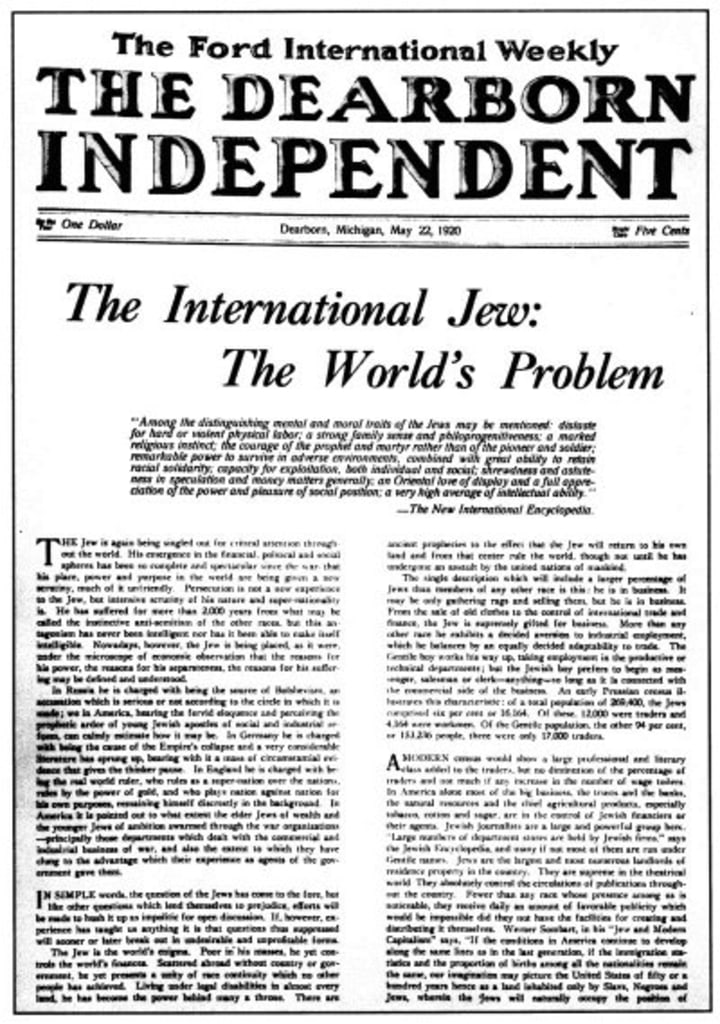
He was so popular, that Hitler and the Nazi regime were impressed by his business and personal ideals. They honored his assembly line idea and applied to same theory of affordable vehicles to the Volswagen production. Hitler himself was impressed with Ford’s reporting, and since it irked Hitler that many Americans were claiming that Nazism could never happen in this country, he took pride in pointing out Ford’s actions. In 1938, at a ceremony in Dearborn, Michigan, Ford was presented with the ‘Grand Cross of the Supreme Order of the German Eagle’ on his 75th birthday. Ford was the first American beneficiary of this order, an honor created in 1937 by Hitler himself. This was the highest honor that could be given to any foreigner and signified Hitler’s personal respect and gratitude to Ford. The presentation was made by Karl Kapp, German consul in Cleveland, and Fritz Heller, German consular representative in Detroit.
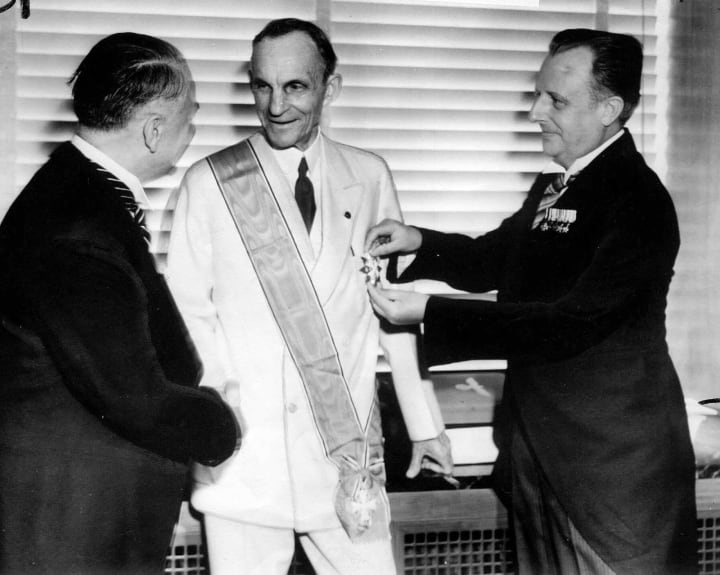
So, my fellow readers and history lovers, we do not want to take away the achievements of Ford and what he brought to the table for Americans. However, I believe that he was a man of double standards and used his name to push his own personal ideals regardless of who he hurt. What are your thoughts? Villain or American Hero. Inventory or racist? Role model or a product of his time? As with all my research into American History, I invite you to do your own research and make your own opinion. Everyone has skeletons in the closet, it is really up to us to decide how many of them get aired out. I invite you to read the following article entitled ‘Remembering Ford’ where some of his employees share stories of what it was like to work for Ford:
https://www.pbs.org/wgbh/americanexperience/features/henryford-witnesses/
About the Creator
Rose Loren Geer-Robbins
One does not simply become a famous writer! It takes many hours before the sun comes up and even more when the sun sets. I am never sure what world I am living in, the one that I am writing about or reality.


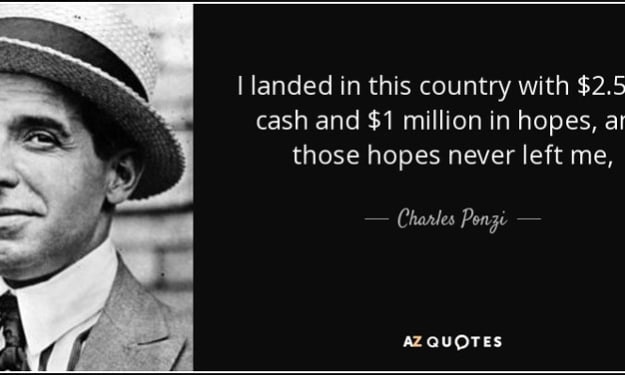



Comments
There are no comments for this story
Be the first to respond and start the conversation.